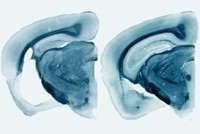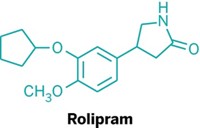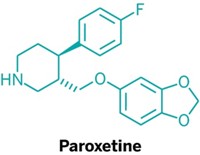Advertisement
Grab your lab coat. Let's get started
Welcome!
Welcome!
Create an account below to get 6 C&EN articles per month, receive newsletters and more - all free.
It seems this is your first time logging in online. Please enter the following information to continue.
As an ACS member you automatically get access to this site. All we need is few more details to create your reading experience.
Not you? Sign in with a different account.
Not you? Sign in with a different account.
ERROR 1
ERROR 1
ERROR 2
ERROR 2
ERROR 2
ERROR 2
ERROR 2
Password and Confirm password must match.
If you have an ACS member number, please enter it here so we can link this account to your membership. (optional)
ERROR 2
ACS values your privacy. By submitting your information, you are gaining access to C&EN and subscribing to our weekly newsletter. We use the information you provide to make your reading experience better, and we will never sell your data to third party members.
Drug Discovery
Small molecule reduces signs of aging in mice
Telomerase activator lowers inflammation, spurs neuron development
by Alex Viveros
July 3, 2024
Telomeres, posted at the edges of chromosomes, protect DNA from damage. The telomerase enzyme helps maintain the length and integrity of telomeres and acts as an aging regulator. Researchers have now found a new small molecule that restores telomerase levels and reverses hallmarks of aging in elderly mice.

One of the main components of telomerase is a donut-shaped protein subunit called telomerase reverse transcriptase (TERT). The gene that produces TERT gets turned off as people age, leading to lower levels of functional telomerase in the body. Many labs have tried to design therapeutics that turn the TERT gene back on.
Scientists found that activating the TERT gene lengthened telomeres in proliferative tissue cells. What’s more, they discovered that activating the gene ameliorated signs of aging in cells that had not synthesized telomeres. This finding suggested that TERT was responsible for regulating genes involved in aging independently of its traditional role as a telomere builder.
The observation prompted researchers in physician-scientist Ronald DePinho’s lab at MD Anderson Cancer Center to screen a library of over 650,000 compounds for small molecules that activate TERT. They found one molecule that stood out, which they dubbed TERT activator compound (TAC) and described in a paper published June 21 (Cell 2024, DOI: 10.1016/j.cell.2024.05.048).
Mice who received TAC had several improvements in aging hallmarks compared to mice in control groups. TAC-treated mice had reduced signs of cellular senescence and neuroinflammation and higher numbers of newborn neurons in the hippocampus.
Elderly mice injected with TAC for six months also performed better on cognitive tests. These mice were started on treatment at around 20 months old, which corresponds roughly to a human in their golden years. One experiment showed an increase in the mice’s grip strength, suggesting the compound had improved muscular function.
“It’s a really, really good paper,” says Gabriele Saretzki, a cellular biologist at Newcastle University who has studied telomerase activators and was not involved in the research. Still, both she and DePinho emphasized that further research is necessary to test the compound’s effectiveness and safety in humans.





Join the conversation
Contact the reporter
Submit a Letter to the Editor for publication
Engage with us on Twitter